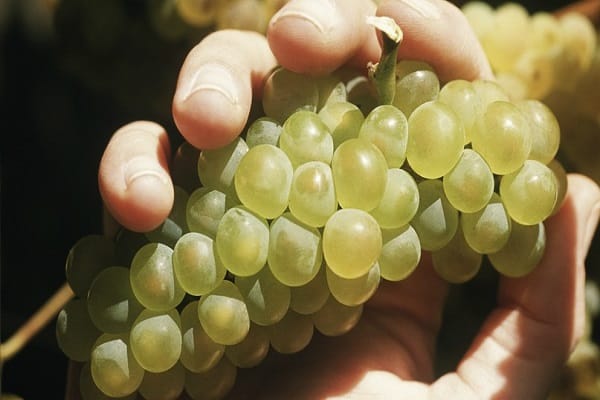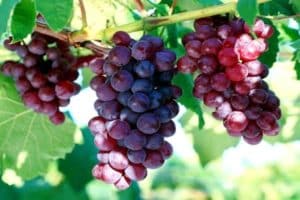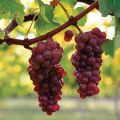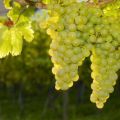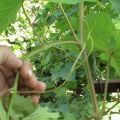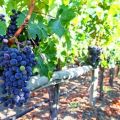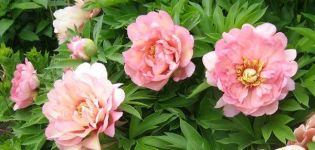Description and characteristics of the Chardonnay grape variety, winter hardiness and requirements for cultivation
Chardonnay grapes are grown in different climatic conditions. The taste of berries, the richness of the aroma, the predominance of sour or sweet notes depend on this. Chardonnay is a wine variety; accordingly, the bouquet of sparkling wines and the traditional varietal wine of the same name depends on the taste of berries grown in cold or hot climates. The taste of the drink is individual and unique in each region. More expressive taste in grapes grown in temperate climates.
Description
Low-yielding early ripening variety, giving bunches weighing up to 200 g. The shape and weight of the bunch depends on the climatic conditions of the region where the vineyard is planted, the quality of the soil and the correct care. From the beginning of flowering to harvesting, no more than 130 days pass, technical maturity occurs earlier.

Description of the berries of the Chardonnay grape variety:
- small, rounded 1.6 cm in diameter, weighing up to 4 g;
- color from greenish yellow to pale golden;
- the skin is dense;
- 2-3 bones;
- juice is 75%;
- 26% of sugar from the total juice.
Citrus flavor and aroma are the hallmarks of the Chardonnay variety.
The vine is medium-sized, strong, fast growing. Chardonnay leaves are medium in size with bristles on the outer side and the edge of the bottom. They can be divided along the edges into 3 or 5 parts. Feature in downward curved corners.
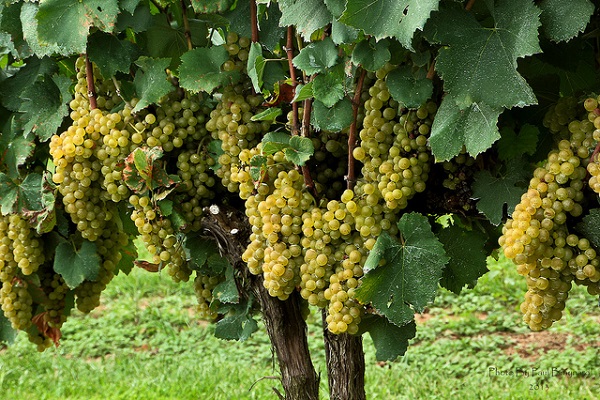
History
The Chardonnay variety has a second name - White Burgundy. The mother vine of the strain serves for the cultivation of grape crops adapted to the individual characteristics of the climate of the region.
Two varieties of Chardonnay grapes are used in the production of wine: Rose and Blanc Musquet.
For industrial winemaking in many countries of the world, including Russia, Czech Republic, Georgia, Chardonnay Rose is grown, distinguished by amber, translucent berries. Chardonnay Blanc Musquet is added to wines for a rich blend.
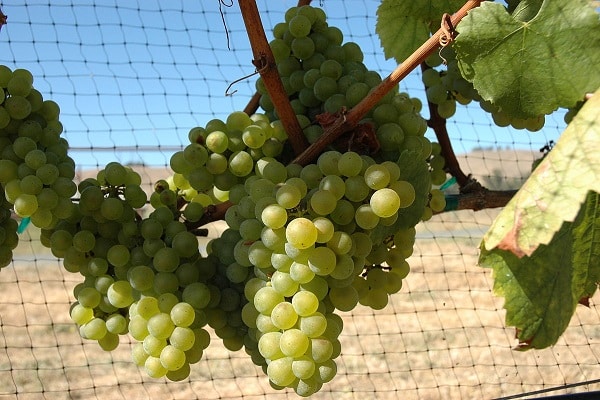
Breeding work to improve the quality of Blanc Musquet is underway in the USA, Austria, Brazil due to the susceptibility of the maternal vine to Pierce's disease.
For your information! With Pierce's disease, the affected vine has a delay in the vegetative stage; in the middle of the ripening season, the leaves begin to dry from the edges, quickly affecting the entire leaf.
According to scientists at the University of California, voiced in 1991, the Gue Blanc and Pinot Noir strains were crossed to obtain Chardonnay. Not all scientists agree with this version. There is an opinion that the Chardonnay variety was originally created by nature itself.

Properties
Each grape variety has its own characteristics.Red, black and green grapes have their own characteristics - they differ in the content of fruit sugars, acidity, balance of vitamins and minerals.
Calorie content
100 g of Chardonnay berries - 60.33 kcal.
The nutritional value:
- proteins - 0.54 g;
- fats - 0.08 g;
- carbohydrates - 14.93 g.
The calorie content of Chardonnay grapes is high in comparison with apples, but this is not an obstacle to recommending this product as an ingredient in therapeutic diets.
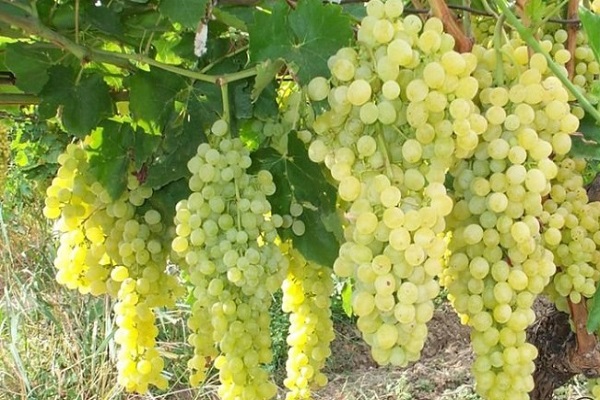
Benefit and harm
The leaves, seeds, grapes contain about 200 elements useful for humans:
- Vitamins.
- Minerals.
- Phytosterols that prevent the formation of cancer cells and inhibit their growth.
- Antioxidants, flavonoids.
- Disaccharides and monosaccharides
- Cellulose.
- Acids.
Moderate systematic use of grapes helps to strengthen the immune system, heart, blood thinning, facilitate kidney function, and prevent constipation. Grape juice dilates blood vessels. People suffering from migraines, with regular use of fresh grape juice, quickly get rid of their illness. For asthmatics and hypertensive patients, grapes should become one of the permanent products of the daily diet.
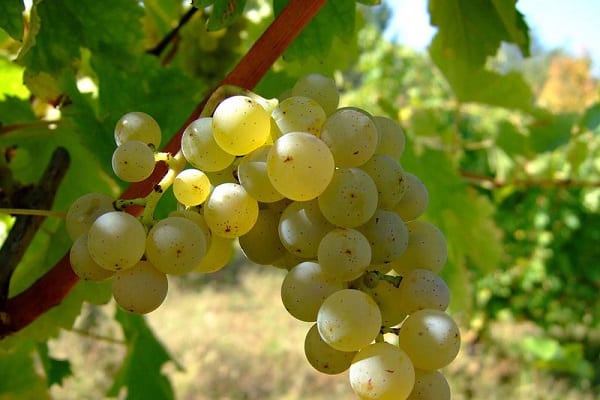
Grapes can be harmful for people with:
- diabetes mellitus;
- obesity;
- colitis;
- chronic pyelonephritis;
- metabolic nephropathy (uraturia);
- ulcers of the mouth, stomach, intestines;
- acute forms of tuberculosis;
- allergy to grapes.
Advice! Before introducing grapes into your regular diet, you need to consult with your doctor.

Acidity
The total acidity of berries of technical maturity is 8.2-11.6 g / l of juice. In overripe berries, the acidity decreases, which makes them unsuitable for winemaking.
The combination of several acids in the original product and those formed during fermentation (natural fermentation) affects the taste of the wine. Grapes contain:
- С4Н6О6 - tartaric acid. Contained only in grapes, its mass fraction in relation to other acids is 95%.
- A kilogram of unripe berries can contain up to 15 g of malic acid. Using unripe berries will give the wine a green apple flavor.
- Acetic, lemon, amber and oxalic are present in grapes in small quantities.
- Vanillic, hydroxycinnamic, lilac, gallic acids are formed during fermentation.

Adjusting the acid content in the wine making process directly affects the taste, blend and aroma of the drink.
Bush characteristic
According to the characteristics, the Chardonnay grape bush is closer to the plants of Western European countries - France, Italy. Tall, semi-spreading, self-pollinated. The early flowering period, in connection with which in cold areas, a loss of yield may occur in whole or in part, if measures are taken in time - to cut off part of the shoots with the most swollen buds. This will delay flowering by about 2 weeks.
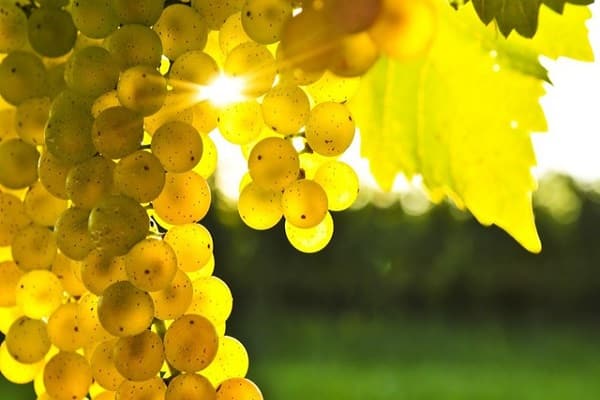
Vine
The young vine has a greenish tint. Shoots older than two years have brown bark. The nodes are poorly expressed. Freezing temperatures down to -20 ° C are fatal for Chardonnay bushes, the bush must be wrapped with high quality by the winter period.
The vine can withstand drought more firmly than spring frosts, severe frosts and heavy rains in early summer.
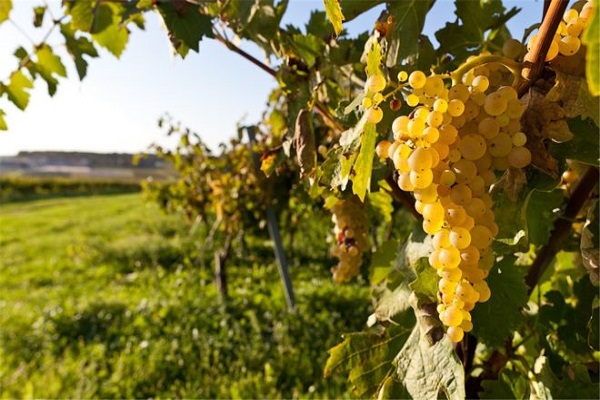
Bunch
The average size is 11-15 cm, weighing from 100 to 200 g. The berries, located with an average degree of adherence, form a conical-cylindrical shape. Flowers by the bush are male and female. During the formation of berries, some of them crumble, as a result of which the bunch turns out to be loose.
Yield
Of all the shoots of the bush, only 40% bear fruit. On each of them 2-3 clusters are formed. To get a decent harvest, you will have to plant a lot of bushes.
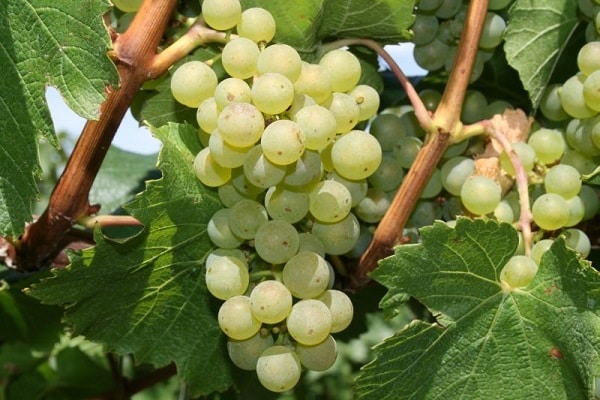
Growing features
The main feature of the variety is its love for rocky, gentle slopes on the western side and clay-limestone soils.
Planting period
Saplings are planted in spring and autumn. When planting in spring in a warm climate, the holes for them are dug at a distance of 2.5 meters from each other. In the fall, on the eve of a cold snap, the distance between the landing holes is equal to the Chardonnay planting in temperate regions - 1.5 m.
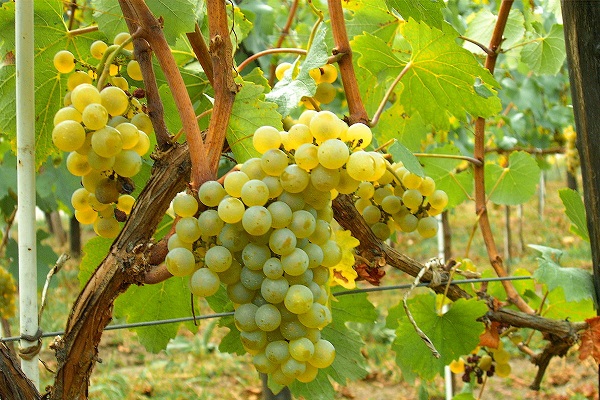
Ripening terms
Despite the early flowering time, the Chardonnay variety belongs to the mid-season varieties. Vegetation lasts 130-140 days. The harvest of technical ripeness in temperate latitudes is harvested from 15 to 31 September.
Care
Chardonnay grapes do not require special care, except for frost protection. With increased soil moisture, the vine will begin to rot, which is what causes the requirement for a special soil. With prolonged drought - more than 20 days, soil moisture is required.
Disease prevention

For Chardonnay, which has medium disease resistance, the main enemies are mildew and mildew fungi.
Mildew prevention - spraying the vine with Bordeaux liquid and fungicides at intervals of 10 days, starting in early spring. The period of intensive protection ends when the berries reach a size of 1 cm.
Oidium is hidden in the ground, during mild winters, it survives and infects plants. Preventive treatment of vines and soil in spring is carried out with fungicides with a high copper content. Several times during the growing season, colloidal sulfur is treated.
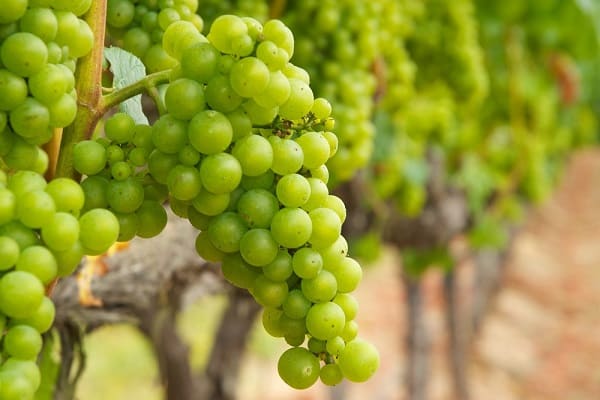
Pruning
In warm climates, the bush is cut in spring to a size of 60 cm from the ground, leaving 4 buds on the shoot. In cool areas, the height of the bush varies from 70 to 120 cm. Green shoots remain hanging freely. In the spring, these shoots are shortened so that no more than 12 nodular bridges remain.
In the spring, part of the shoots is cut off in case of threat of loss of yield during late frosts. In summer, a strong thickening of the vine is possible, in this case, the berries will have to provide sufficient access to sunlight with a pruner.
